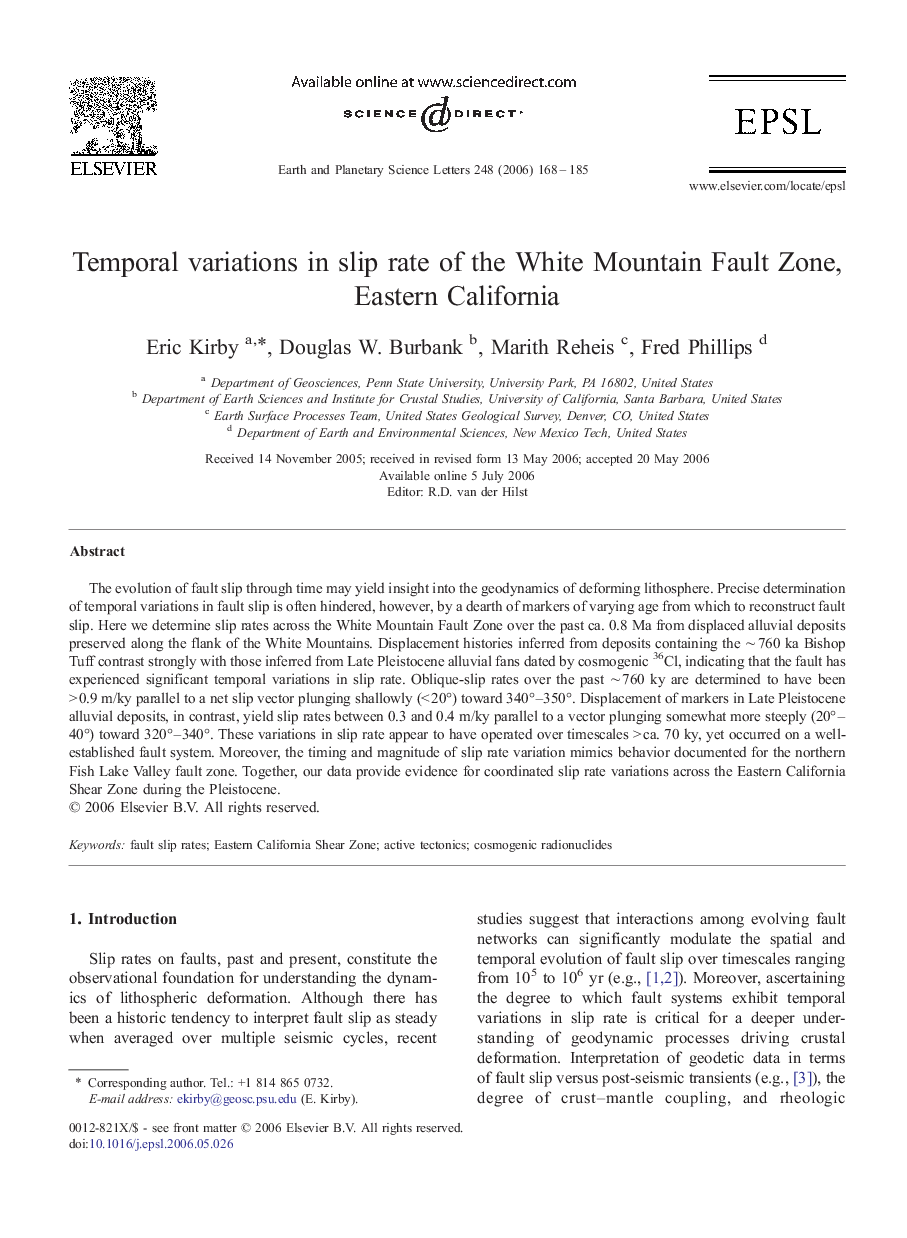| Article ID | Journal | Published Year | Pages | File Type |
|---|---|---|---|---|
| 4680824 | Earth and Planetary Science Letters | 2006 | 18 Pages |
The evolution of fault slip through time may yield insight into the geodynamics of deforming lithosphere. Precise determination of temporal variations in fault slip is often hindered, however, by a dearth of markers of varying age from which to reconstruct fault slip. Here we determine slip rates across the White Mountain Fault Zone over the past ca. 0.8 Ma from displaced alluvial deposits preserved along the flank of the White Mountains. Displacement histories inferred from deposits containing the ∼ 760 ka Bishop Tuff contrast strongly with those inferred from Late Pleistocene alluvial fans dated by cosmogenic 36Cl, indicating that the fault has experienced significant temporal variations in slip rate. Oblique-slip rates over the past ∼ 760 ky are determined to have been > 0.9 m/ky parallel to a net slip vector plunging shallowly (< 20°) toward 340°–350°. Displacement of markers in Late Pleistocene alluvial deposits, in contrast, yield slip rates between 0.3 and 0.4 m/ky parallel to a vector plunging somewhat more steeply (20°–40°) toward 320°–340°. These variations in slip rate appear to have operated over timescales > ca. 70 ky, yet occurred on a well-established fault system. Moreover, the timing and magnitude of slip rate variation mimics behavior documented for the northern Fish Lake Valley fault zone. Together, our data provide evidence for coordinated slip rate variations across the Eastern California Shear Zone during the Pleistocene.
